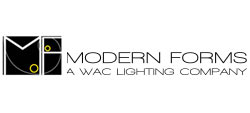-
Are your line voltage downlights UL listed?
Yes, they are UL and CUL listed for both the United States and Canada.
-
How do I decide between which housings to use?
First you need to determine whether this is a new construction or a remodeling situation. Then determine if the housing will be in contact with insulation (IC housing) or not (Non-IC). Next determine your wattage requirements. Finally check your current WAC Lighting catalog or our website, www.waclighting.com, for fixture dimensions and trims selection.
-
Can your housings be used on a drop ceiling? If so, how?
Yes, use new construction housings. The hanger bars rest on the T-Bars and are secured in position.
-
I am not sure which trim I should use for my application, which type should I use for general ambient lighting?
Both the Basic Baffle and Open Specular will be good choices. The baffle helps reduce glare while the specular reflector will increase the spread of light from the fixture.
-
I want to use some screw-in compact fluorescent lamps in your R3 Series downlight. Is that possible?
Yes, however, there are two important points to keep in mind when planning to do this. First, will the lamp properly fit within the housing? Your screw-in CFL lamp may extend beyond the lip of the housing, which will cause an unpleasant look. Second, some trims are designed around specific lamp types. If you use a “cone” style trim that should have a reflector style lamp, if you use a “spiral” type CFL then much of the light output will not be distributed properly. Whenever you are considering using a screw-in CFL lamp in place of an incandescent in any downlight, it is best to check with the manufacturer for compatibility recommendations.
-
Can these fixtures be installed in a bathroom?
Yes, they are all suitable for damp locations (porch or bathroom) using any trim. Wet locations, above a shower or outdoors, require the use of specific trims. Consult your current WAC catalog or our website, www.waclighting.com, for our current offerings.
-
What downlight is the best choice for installation in an attic or other hot environment?
The WAC downlights are UL approved for most ceiling applications. For applications in unusually extreme conditions we recommend IC-Rated cans with PAR lamps. This combination will give you a housing and lamp that is the most durable and a low maintenance choice for this type of environment.
-
Please explain what you mean by Air-Tight downlight and why would I want to use one?
Any Airtight rated downlight has demonstrated in an independent testing laboratory environment that it will prevent air flow through the fixture. This is important because it saves money in heating and cooling costs. Just as important, some state regulations are now requiring that new home construction use this type of downlight.
-
Do any of the fixtures come with lamps?
No, our downlights use lamps that are readily available in all electrical supply centers.
-
The recessed lights I have in my bedroom are giving too much light. What can I do about it?
There are three simple solutions to your problem.
- You may install a lower wattage lamp. With all incandescent downlights you can simply use the lowest wattage lamp available using the same base type.
- You may use a coated specialty lamp. Most major lamp manufacturers are now making “color corrected” frosted incandescent lamps that provide a softer white light that does not seem as harsh as the light provided by a standard light frosted incandescent lamp.
- You may install a dimmer to lower the light level. The additional benefit of this choice is it will extend your lamp life.
-
What is the difference between the remodel and new construction housings?
New construction housings are mounted to joists or T-Bar type ceiling grids. Remodel housings are used after a drywall ceiling is installed. A hole is made: the housing slips through and is mounted to the drywall panel with spring clips.
-
How do I choose between the different size downlights?
For aesthetic reasons you may want to choose the smallest aperture size, but consider the various lamp wattages available for the aperture size. For example a 4” fixture is limited to a 50watt maximum PAR lamp, which will be suitable for most 8’ ceilings but not higher. Generally a 5” aperture will take up to 75 watts and a 6” up to 150watt lamps (subject to trim compatibility as listed in the catalog). A lamp performance chart in the back of the catalog will help your selection.
-
How many downlights should I use to light a room?
This is one of the most frequently asked questions, and one that does not have a standard answer.
The light level and coverage varies greatly with room usage. For general lighting applications a good rule of thumb is to space fixtures not more than half the ceiling height. For example if a room has an 8’ ceiling you would not exceed 4’ between fixtures. This ensures even coverage but may be far more than a den needs and less than a reading area or work station needs. Use this principle as a base line.
-
Do you have line voltage downlights that can be used in a sloped ceiling?
Yes, we have 6” trims and housings that can be used on a sloped ceiling.
-
How are Line Voltage Downlights sustainable?
WAC Line Voltage Downlights have a Five-Year Warranty and are Responsibly produced in the WAC clean, zero landfill manufacturing campus with in-house UL testing labs.


